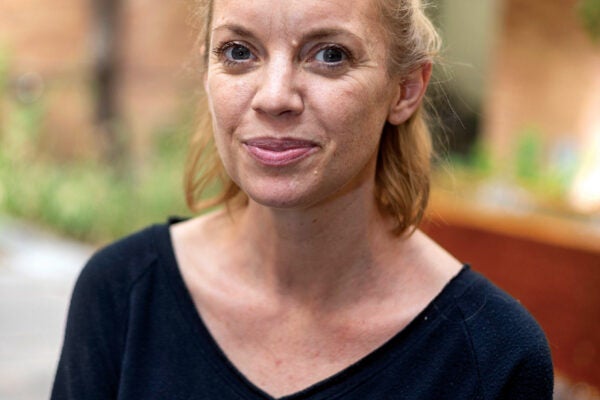Maintaining the culture of excellence at The University of Texas at Austin extends beyond the classroom. Those who work, teach and learn on campus are creating environmental programs and initiatives that benefit the Forty Acres and beyond. The Green Fund, a competitive grant program, supports sustainability-related initiatives and programs proposed by staffers, faculty members and students.
The Texas Legislature passed a bill paving the way for the Green Fund in 2009, and it was signed into law by then-Gov. Rick Perry. Two years later, the first grants were distributed. The Green Fund has financed over 170 projects and granted more than $3 million to recipients. Funding comes from students: $5 per semester and $2.50 per summer session is allocated to the Green Fund from a student’s tuition fees. A student-majority committee reviews Green Fund proposals and awards grants to recipients.
Over 50 grants have been awarded to staff members since the Green Fund’s inception. For the 2018-2019 fiscal year, five out of 17 grantees were staffers.
Elizabeth Arredondo, assistant to the director of the Center for Electromechanics (CEM) at the J.J. Pickle Research Campus (PRC), received a Green Fund grant for aligning the PRC with UT’s Zero Waste goals. After traveling to the main campus for meetings, Arredondo noticed signs and labels for trash cans and recycling bins that were not present at the PRC. This motivated her to seek help to make recycling efforts at the PRC more visible.
“Brianna Duran, who is in the sustainability office, was the one who mentioned to me that I could get Green Funding if I wanted to do a recycling program that allowed me to purchase some materials that I needed to update the building,” Arredondo says. “The idea that I came up with was to apply for the grant; ask for money to purchase the posters, stickers and anything to update the labeling for recycling and landfill; and to also provide an education program for the people that don’t know how to properly recycle.”
Arredondo has seen her $2,500 award make visible changes through updated signage in the CEM laboratory, which has helped educate her peers on the benefits of recycling. The Green Fund is significant because it awards sustainability-related efforts across the spectrum, Arredondo says.
“As long as the Green Fund continues, I think it is awesome to try to educate people that there are many ways that we can decrease our footprint and keep our Earth alive and thriving for people in the future,” she says.
THERE ARE MANY WAYS THAT WE CAN DECREASE OUR FOOTPRINT AND KEEP OUR EARTH ALIVE AND THRIVING FOR PEOPLE IN THE FUTURE.
Neil Kaufman, sustainability coordinator for UT’s housing and dining department, received $6,663 to establish a battery recycling program in dorms.
Staff members and students had suggested to Kaufman the need for more battery recycling resources.
“I could see for myself that there were a lot of batteries that were being thrown away where they could be recycled, especially in our residence halls and offices,” Kaufman says.
To solve this problem, Kaufman now places bins around residence halls and offices for battery recycling, then works with Austin Resource Recovery to ensure the batteries are properly recycled.
Although Kaufman could have executed his program through the housing and dining department, he said he thinks the Green Fund gives it a wider reach and university-wide support.
“I like to think about projects that may be mutually beneficial for our program and the Green Fund and for University Housing and Dining,” Kaufman says. “The Green Fund likes to tell a story through their projects. I like to find and package certain initiatives that maybe we could do with UHD’s budget pretty easily, but it would be a lot better to say that the initiative is backed by the university, a committee with staff, faculty and students and is supported by literally every student on campus financially. Having the Green Fund’s investment in this plan provided me and UHD the means to support recycling batteries on a regular basis.”
Jim Walker, director of sustainability at UT, has seen the Green Fund flourish throughout his time on campus and evolve into a program that makes meaningful improvements for Texas.
“The Green Fund shows us what’s possible,” Walker says. “It’s about leveraging resources that we may not have otherwise to make our environments better. The connectivity of the Green Fund allows people on campus to come together and do powerful work.”
Green Fund program director Jill Parrish says the program allows staff members, faculty members and students to look toward what’s possible.
“The Green Fund ultimately gives a pulse to where staff, faculty and students are when it comes to sustainability,” Parrish says. “It’s nice to have a pot of money that applicants can use to try things with. That’s when it becomes fun — to see how problem-solving and creativity can connect.”



